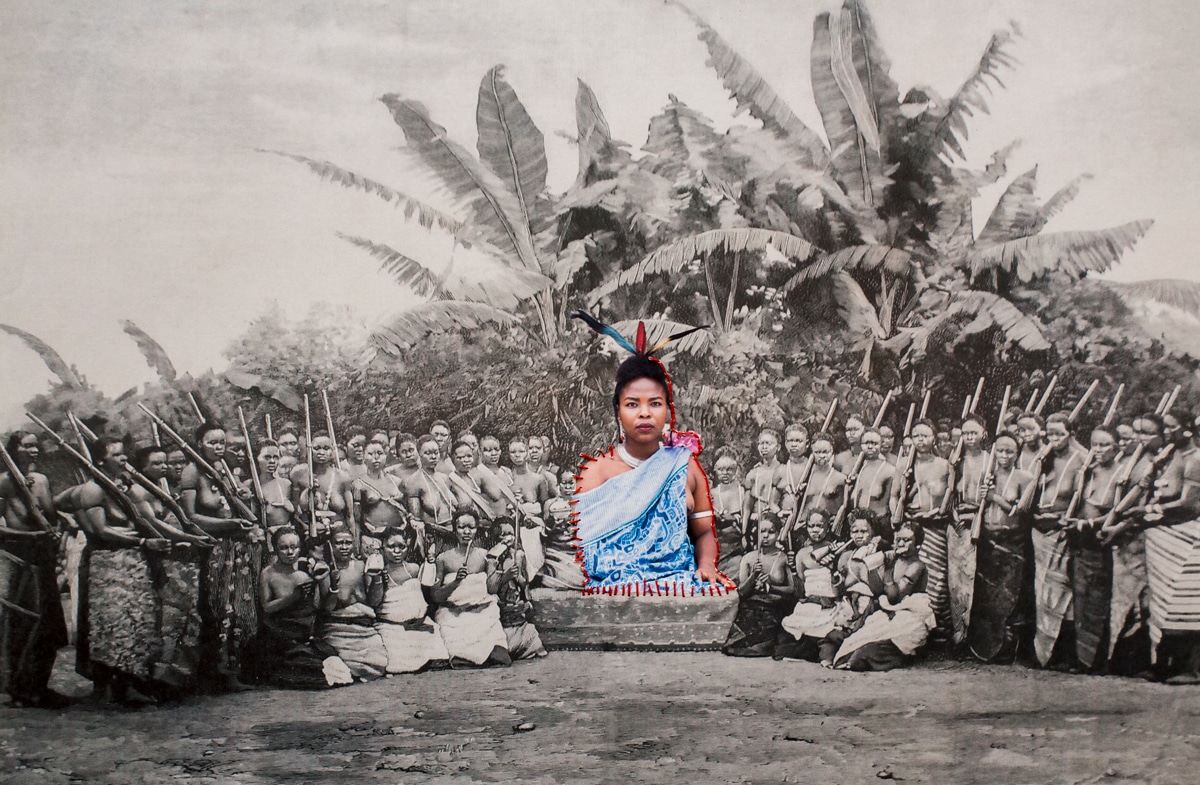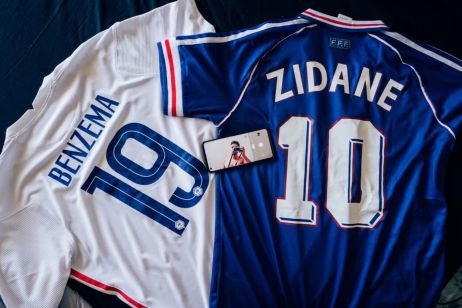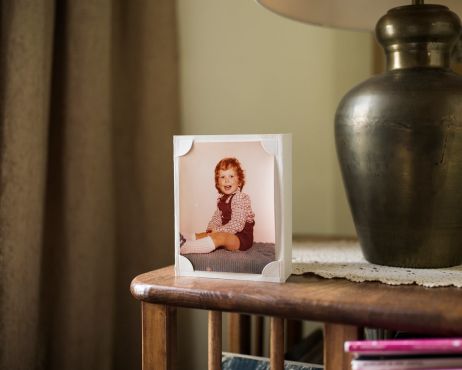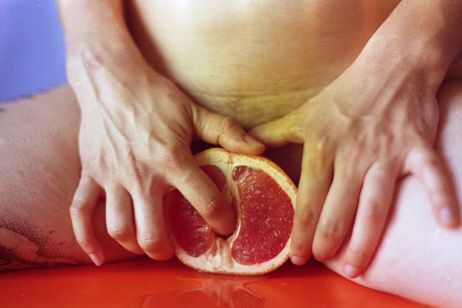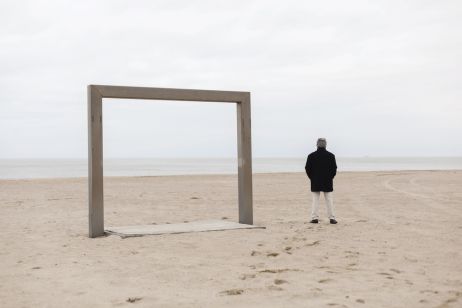“Reinvesting history is a way of taming it. Making it more personal, more poetic”, says Beninese artist Ishola Akpo. The photographer has chosen to pay tribute to African queens – figures History has forgotten. With Agbara Women and Traces d’une reine (Traces of a queen), he investigates a complex past where the notion of power is synonymous with resistance and fragility.
Fisheye: What kind of artist are you, and what does photography bring to your process?
I define myself as a visual artist who uses photography as my main medium. In my approach, I do not separate photography from the rest. A medium remains a medium. I turned to photography because it was a way of seeing, before trying to understand or think. It is a means of self-experimentation, and it bears witness to my particular gaze, a gaze situated between my sensitivity as an artist and the reality of the world.
And it is through photography that you tell stories…
Through my artistic practice, I tell the great History of peoples, like my own. I refer a lot to this notion to shed another light on important facts of the past or events that the great History will not remember. This is how I reappropriate facts. It is by doing research that I was able to learn about my past. Much more than at university or school. Reinvesting history is a way of taming it, making it more personal, more poetic. My research has led me to question our oral and visual memories, to rummage through archives for several days. I look. I observe. I listen. I try to understand. I take pictures of every detail, to have a more precise idea of the visual I will put on it.
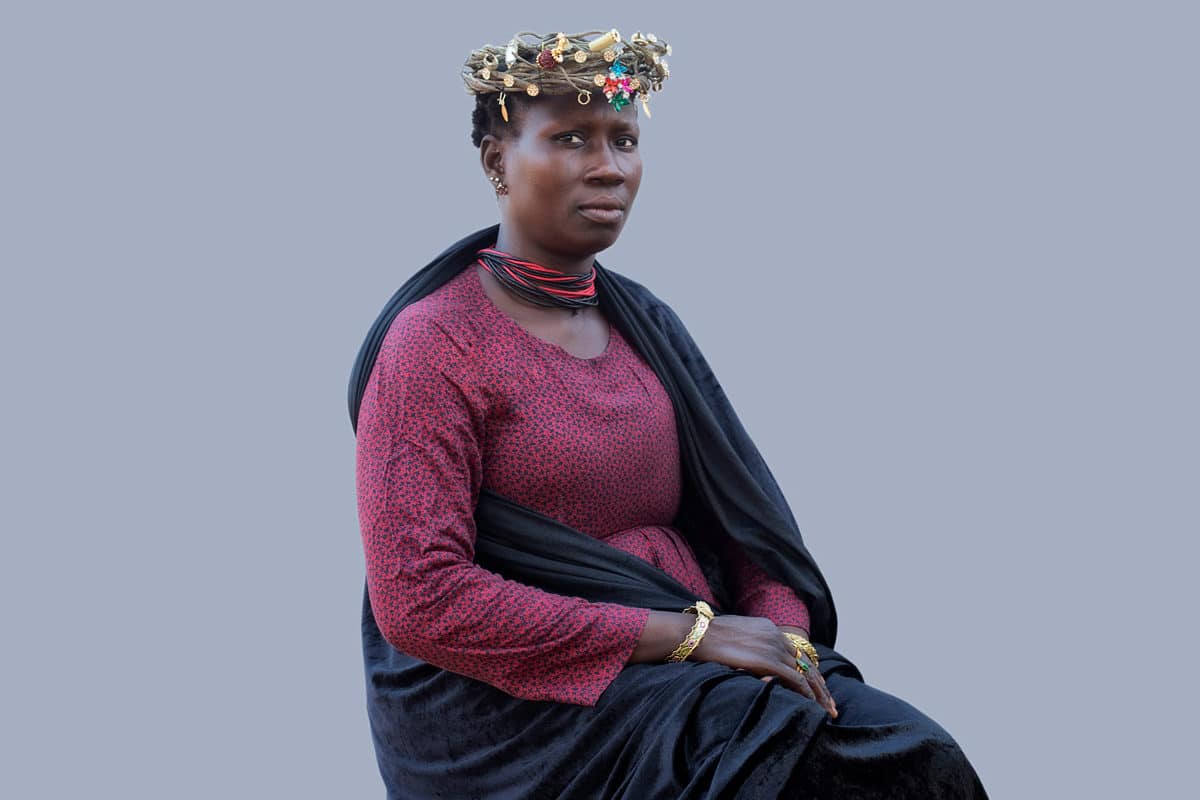
Were your series Agbara Women and Traces d’une reine the result of your research on African queens? And what sparked these works?
I wanted to talk about African queens who had their moment of glory in the different kingdoms of the continent, but who have been, for the most part, forgotten. And this, voluntarily. Agbara Women restores a real place to African women in our complex societies. I already mentioned this in my previous series, entitled L’essentiel est invisible pour les yeux. Listening to my grandmother tell her personal story, I found the way she struggled to raise her children – almost alone – extraordinary. There is something regal about being faithful to these traditions.
It’s not a very documented subject, how did you proceed?
It was during my research that I realised that there were very few documents and archives concerning African queens. Some information was deliberately erased. So I had the idea of recreating the archives by going through those of the Fondation Zinsou (a foundation focused on social action and culture, dedicated to contemporary African art) on kings.
At first, there was a research phase. I already had a precise idea of what I wanted to do, but I hadn’t stopped my creative process – especially concerning the characters, the props or the set. Like a painter, I did several tests with different backgrounds. Then I did some shootings with models playing the queens. The addition of accessories completed the identity of each queen.
What were your references in this reconstruction?
I was inspired by the paintings of the 17th and 18th centuries, exhibited in the Louvre, in Paris and the Museo Nacional del Prado in Madrid. I also read a lot. My favourite book? Njinga, Histoire d’une reine africaine (1582-1663) (La découverte Editions, 2018, Preface by Françoise Vergès) or José Edouardo Agualusa’s book, Ginga et comment les africains ont inventé le monde. Finally, one queen in particular inspired me. Queen Tassi Hangbè who ruled the Kingdom of Dahomey from 1708 to 1711 and who initiated several projects. Among other things, she created an army of female warriors (later nicknamed Amazons of Dahomey) or developed programmes for women to learn male trades. Yet all her achievements were attributed to her male predecessors.
Did the story of another queen in particular inspire you?
In Angola, Njinga Mbandi (1581-1663), Queen of Ndongo and Matamba, left her mark on 17th century history. She established herself as an exceptional ruler. Her warlike and espionage tactics, her diplomatic skills, her ability to forge multiple strategic alliances, and her knowledge of commercial and religious issues enabled her to oppose Portuguese colonial projects until her death.
Is the study of History’s forgotten queens a pretext for questioning the place of women in our contemporary societies?
What’s important for me is to shed light on certain facts of the past in order to understand contemporary history. The debate on gender equality is not my concern. I am interested in how women have been able to gain power over time. I am also interested in how their exceptional achievements have been ignored. Why this silence? Are there still historical mechanisms at work that will make it possible to forget or not to mention certain facts of today in the future?
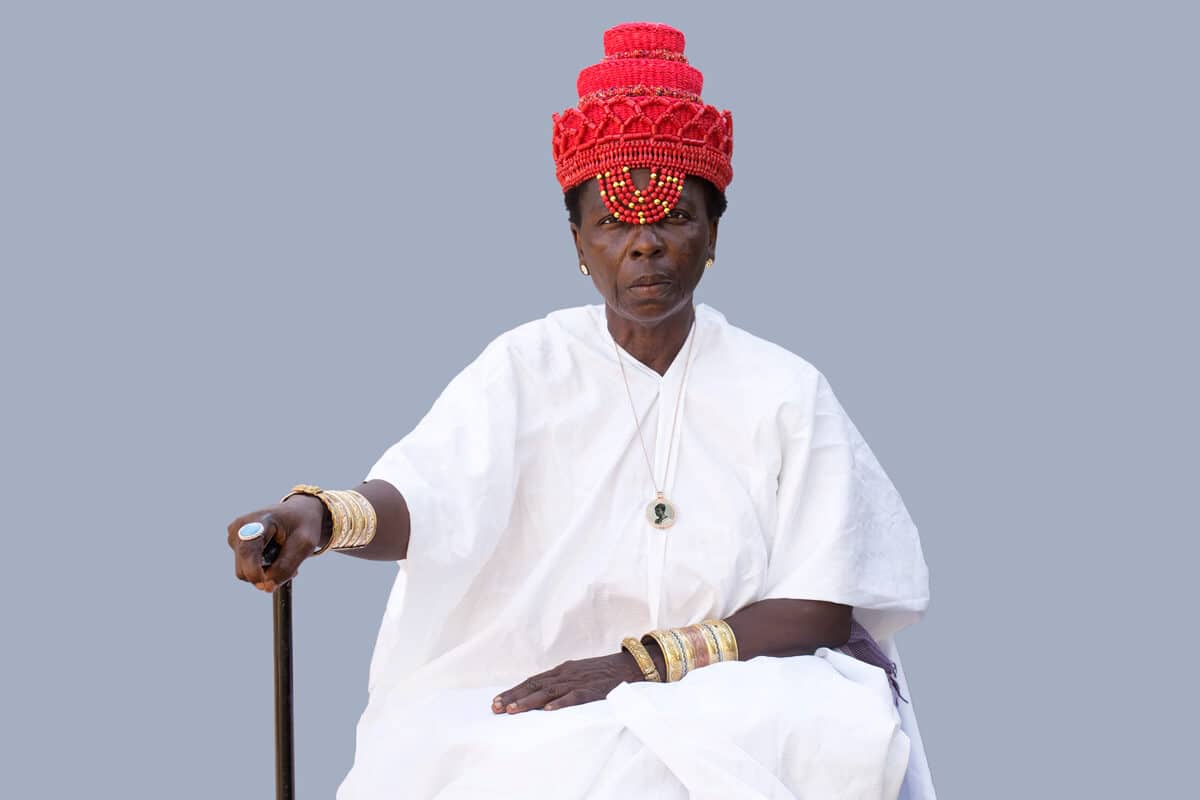
Is there a picture that you are especially proud of, that you would like to comment on?
Each photo has its own story, but the image entitled “Iyami” (“mother” in Yoruba – a West African language) is really special. It’s my mother. I asked her to pose with a crown and traditional clothes. But my mother thinks that anything related to tradition is evil. She is a member of the Evangelical Church. It took a while before she agreed to do the photos. So the session was very short. It was complicated to put her in the skin of a queen – she has Christ in her skin. It’s all linked to the history we’ve been taught. The Catholic religion was sometimes imposed on certain queens in order to gain power.
Agbara Women, what does this title mean?
I wanted to keep an original African name while offering an opening to the modern world. “Agbara” means power in Yoruba and I wanted “Women” to be in English.
Your images are confronted with other mediums such as sculpture, sewing, or collage, why such a mixture?
It’s a new experience for me to explore other mediums. As an artist, I don’t limit myself. I have used each of these mediums to better tell the complex story of these queens. At the beginning, there was this very concrete idea of making photographic portraits. Then, in the course of my research, I realised that I had to go further. To question certain royal accessories such as tapestry, for example. The idea of sculpture came later.
Who is this project adressed to?
To students, researchers, as well as the public.
What did you learn about yourself, and your work as a male artist?
It is possible to dive into certain subjects, even when they aren’t clear at first glance.

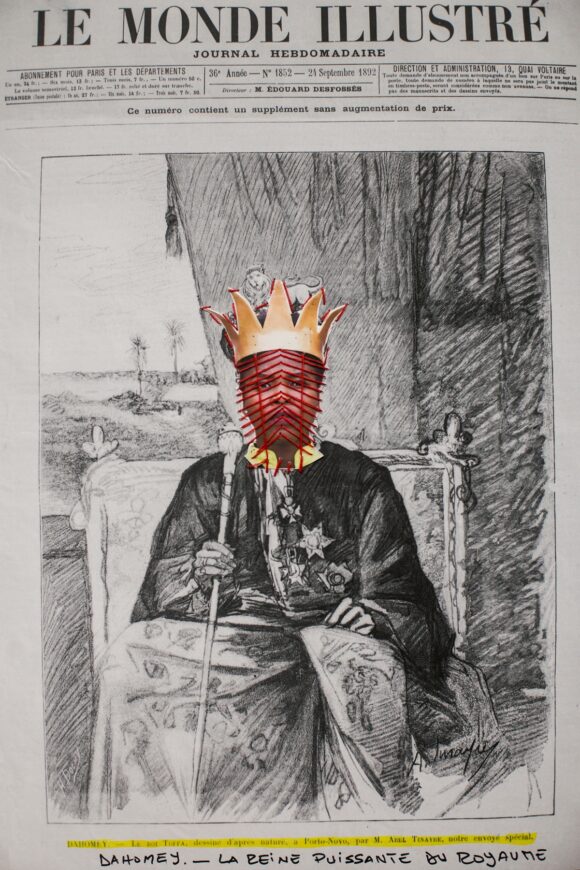

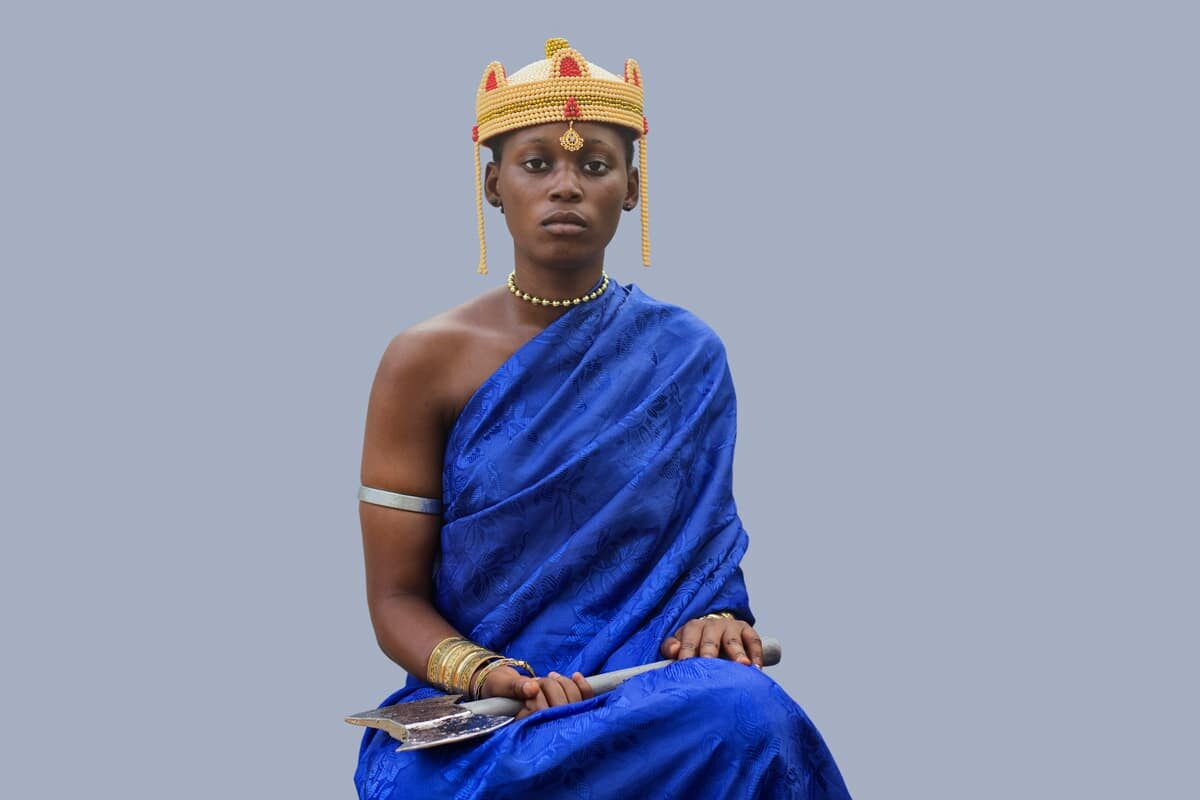
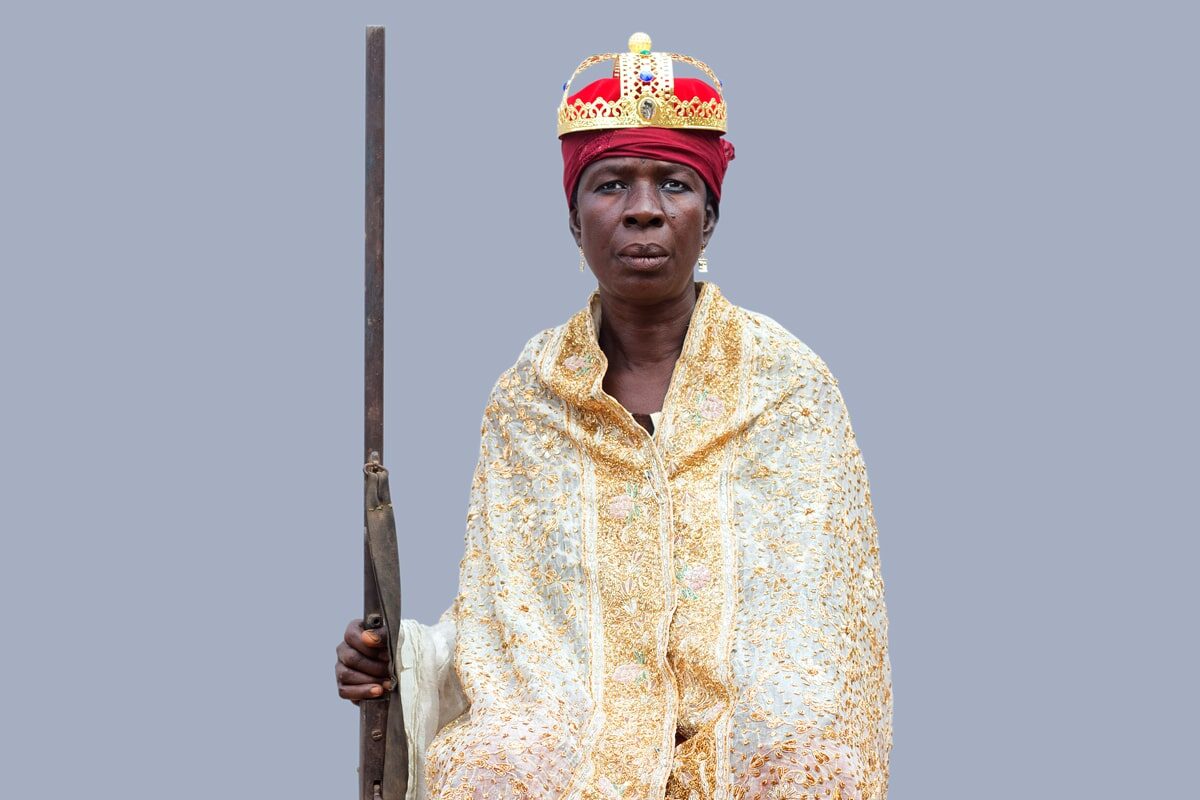
© Ishola Akpo
